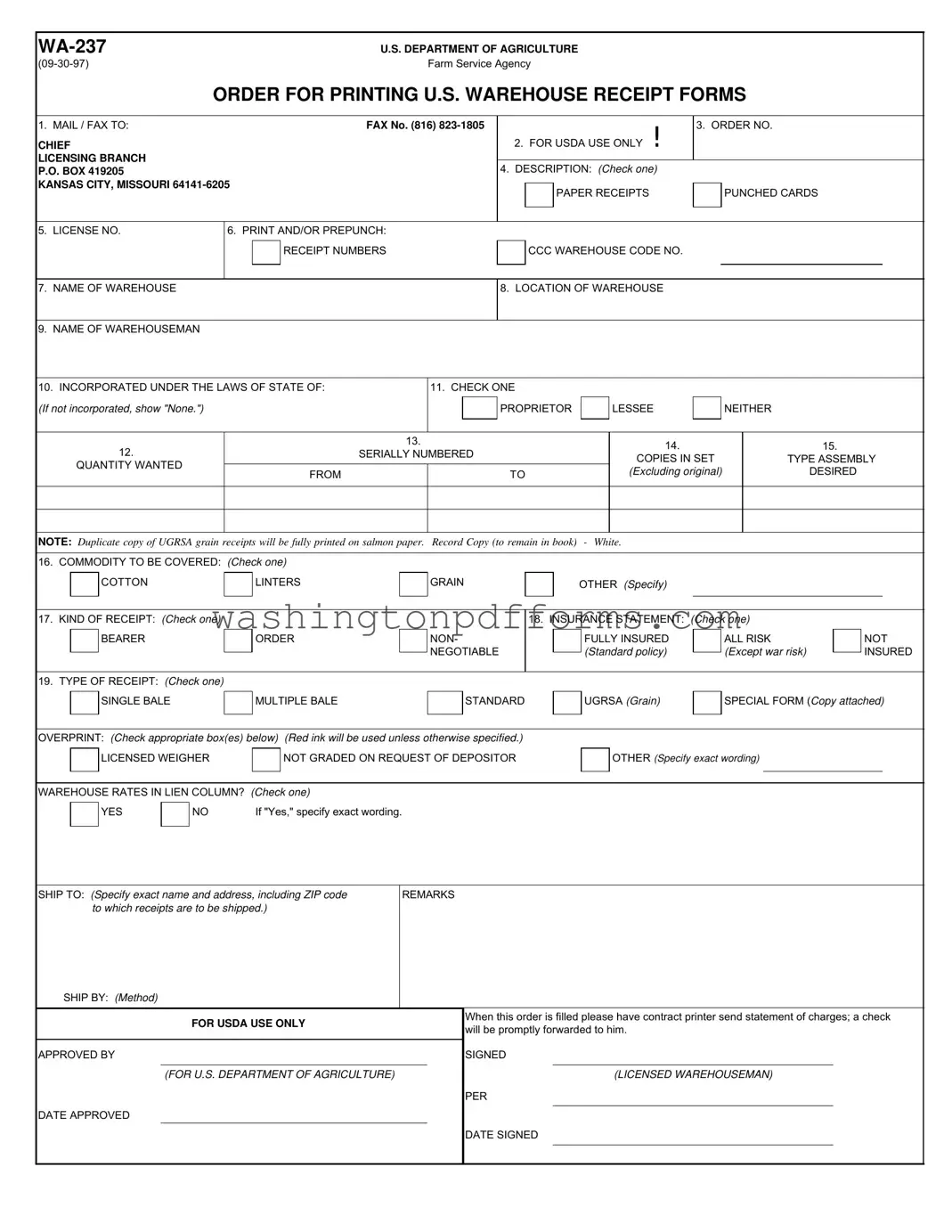Filling out the WA-237 form can be a straightforward process, but many people make common mistakes that can lead to delays or complications. Understanding these pitfalls can help ensure a smoother experience.
One frequent error is neglecting to provide a complete shipping address. The SHIP TO section requires precise details, including the name and ZIP code. Incomplete information can result in the form being returned or the shipment being misdirected.
Another common mistake involves the selection of the DESCRIPTION option. Applicants often fail to check the appropriate box for either paper receipts or punched cards. This oversight can lead to receiving the wrong type of receipts, causing further delays in processing.
People sometimes forget to indicate the LICENSE NO. or provide incorrect numbers. This information is crucial for identifying the warehouseman and ensuring compliance with USDA regulations. Omitting this detail can stall the order approval process.
Misunderstanding the TYPE OF RECEIPT can also create issues. Some individuals check the wrong box, choosing between single bale, multiple bale, or standard UGRSA. This mistake can lead to receiving receipts that do not meet the specific needs of the warehouse operation.
Another area where errors frequently occur is in the QUANTITY WANTED section. Applicants may either underestimate or overestimate the number of receipts needed. This can result in unnecessary costs or shortages that disrupt operations.
People often overlook the INSURANCE STATEMENT. Selecting the incorrect option—whether fully insured, all risk, or not insured—can have significant implications for liability. It is essential to carefully consider the coverage needed before making a selection.
In the COMMODITY TO BE COVERED section, individuals sometimes fail to specify the type of commodity accurately. This oversight can lead to confusion and mismanagement of the warehouse’s inventory.
Lastly, the REMARKS section is often underutilized. This space allows for additional instructions or clarifications that can aid in processing the order effectively. Failing to use this area can leave important details unaddressed.
By being mindful of these common mistakes when filling out the WA-237 form, individuals can improve the accuracy of their submissions and facilitate a more efficient process with the USDA.
